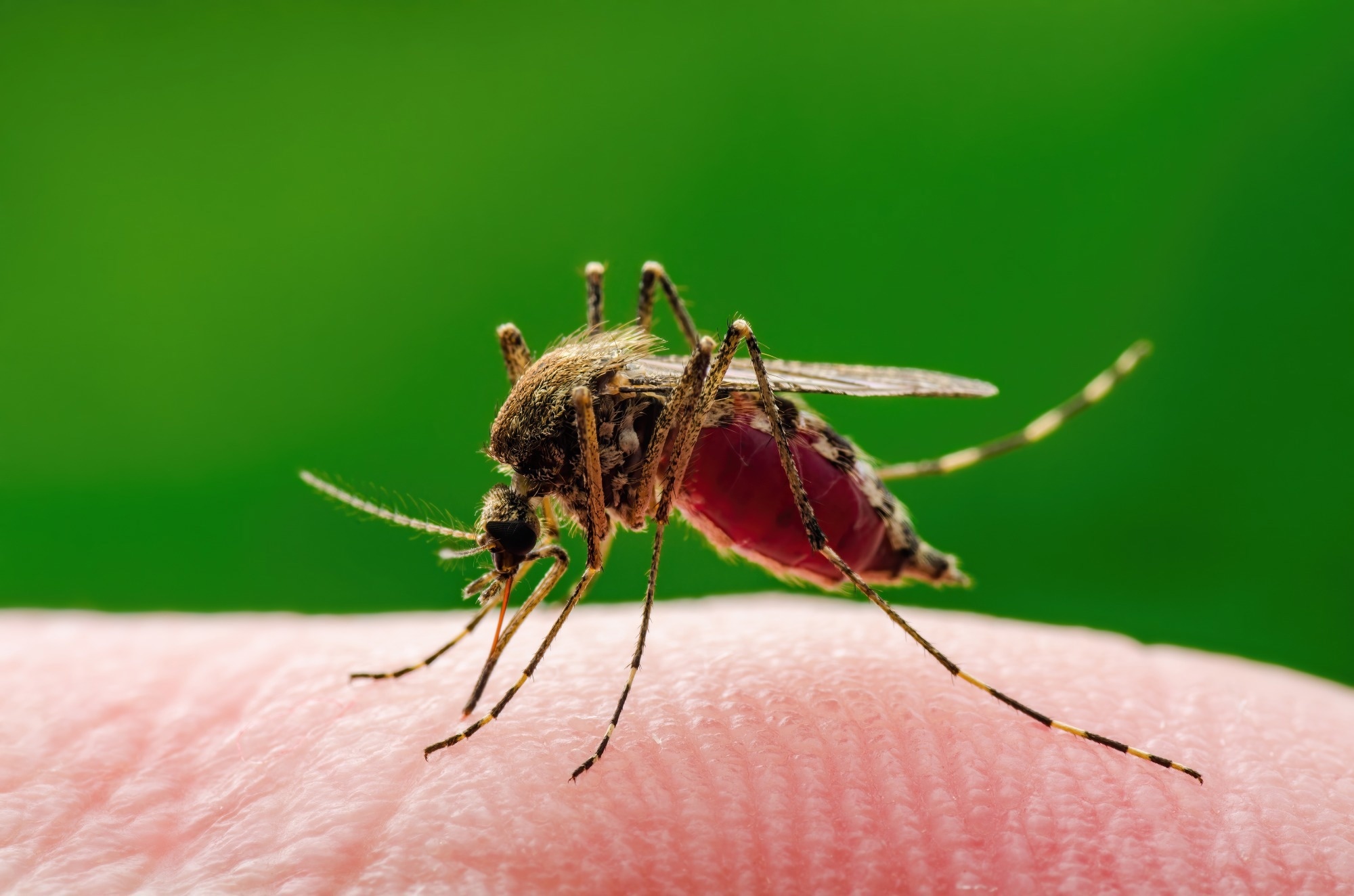In a recent study published in One Health, researchers projected the West Nile virus (WNV) spread in the context of climate change.
 Study: European projections of West Nile virus transmission under climate change scenarios. Image Credit: nechaevkon/Shutterstock
Study: European projections of West Nile virus transmission under climate change scenarios. Image Credit: nechaevkon/Shutterstock
West Nile virus (WNV), a climate-sensitive, multi-host, multi-vector zoonosis, is transmitted by mosquitoes which function as vectors, with birds acting as primary amplifying hosts. The WNV epidemiology and transmission are extremely complex and are influenced by biotic and abiotic variables.
Among many eco-climatic causes, climatic anomalies, such as spring and summer temperatures observed during the previous decade, were by far the most significant predictors of recurring WNV outbreaks in Europe. As outbreak risk areas vary, predicting the risk of WNV outbreaks employing climatic factors might assist direct preparedness efforts and public health measures toward targeted efforts.
About the study
In the present study, researchers estimated the risk of WNV outbreaks under a variety of socioeconomic and climate change scenarios.
The team extracted spatiotemporal climate data, which accounted for combined socioeconomic pathways as well as representative concentration pathways from Inter-Sectoral Impact Model Intercomparison Project, phase-3 (ISIMIP3b) data according to the output from Coupled Model Intercomparison Project, phase 6 (CMIP6). These statistics reflect potential climate futures as per the combined impact of greenhouse gasses and other anthropogenic causes that may influence climate, and are labeled according to their end-of-century radiative forcing in comparison to preindustrial conditions.
The team examined a variety of emission and radiative forcing scenarios ranging from extremely stringent (RCP26) to business as usual (RCP85). The climate data for daily surface temperature, relative humidity, and total precipitation were spatially aggregated at the NUTS3 level and classified into four quarters annually. In order to improve the model's forecasting ability, 19 bioclimatic predictors describing annual trends were also included. For historical simulations, the E-OBS climate data set between 1950 and 2014 was also employed.
The effect of socioeconomic factors on illness risk estimations was also assessed. In particular, scenario-specific variables for gross domestic product (GDP) and annual population density were introduced as additional predictors. For all analyses, the team employed the supervised machine learning classifier XGBoost. Using eco-climatic predictors as variables for class differentiation, the system demonstrated high prediction capacity to classify a location with a WNV outbreak.
Results
In the future decades, the WNV threat is anticipated to spread beyond the currently affected regions, particularly to Western Europe. Even taking into account conservative assumptions, the risk for Europe might rise up to 3.5-fold between 2040 and 2060 compared to that between 2000 and 2020. Between 2040 and 2060, the risk may rise by 2.5 to five times in Western Europe. Under extreme scenarios, the risk for Eastern and Central Europe, where the disease is now endemic, might rise by 0.3 and 0.7 times during the same time period. In low to extreme cases, the expected risk increase for Southern Europe is estimated to be almost 0.4 to 0.5 times.
Between 2040 and 2060, the average proportion of disease-reported European regions at risk might grow from 23% to 29%, relative to the baseline proportion. These predictions may increase to 46% by the end of this century, when it is anticipated that the outbreak-risk zones will expand into Northern Europe. In terms of geographical growth, the rise in risk was the most significant in Western Europe. Also, from 2040 to 2060, the risk-areas may grow from 14% to 31%, versus the baseline of 3.6%. It is anticipated that the current proportion of locations reporting WNV transmission in Central and Eastern Europe could rise to 44% to 55%. Furthermore, the present proportion of affected areas in Southern Europe could climb to 33% to 39% within this period. During the same time frame, an estimated 2% of North European regions that are currently risk-free will be susceptible to risk.
Depending on climate predictions, the team predicted that an additional 161 to 244 million Europeans will be at risk between 2040 and 2060. Regardless of the climate scenario, denser-populated Western Europe is anticipated to have the highest proportion of enhanced PAR. Even under the most conservative scenario for this region, 94 million persons could be at risk between 2040 and 2060. Similarly, it is anticipated that the additional PAR for Eastern and Central Europe will be 33 million, for Southern Europe will be 34 million, and 0.7 million over the same period.
A robustly positive relationship was observed between the maximum spring temperature and the outbreak risk, while a strong negative relationship was noted between relative humidity and risk of outbreak. Specifically, the risk rose significantly when spring temperatures were over 15 degrees Celsius and relative humidity was below 77% in all geographies and circumstances.
Conclusion
The study findings showed that WNV, which is currently prevalent in sections of European countries, will certainly continue to spread to new areas as climate change creates more suitable conditions for its vectors. Essential components of an efficient public health response include early warning systems, vector and illness surveillance, health promotion, vector control measures, and awareness-raising among the general public and medical professionals. Many of these efforts require intersectoral coordination, cross-disciplinary research, and the application of sophisticated disease modeling to inform targeted responses.